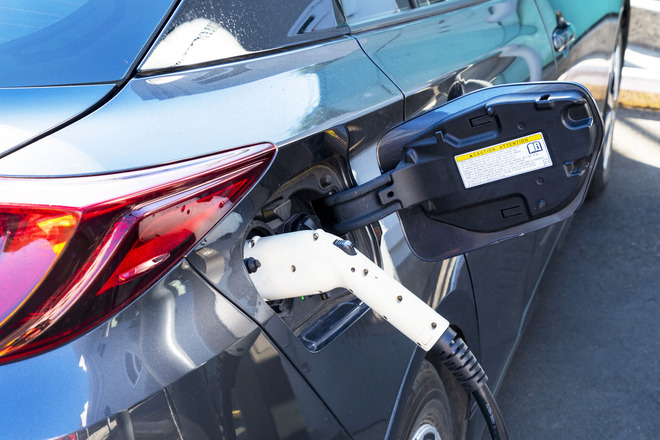New resources provide 'one-stop shop' for EV charger project planning
 For more information, contact Matt Noble 503-779-9868
Aug. 31, 2023
A suite of new online resources will help Oregon planners and decision makers deploy electric vehicle charging projects that are equitable, cost-effective, and will meet local needs while supporting statewide goals for electrifying transportation.
The centerpiece document — the Guide for Oregon EV Charging Deployment — helps people plan for EV charging infrastructure projects. It has an overview of EV charging basics, best practices in station design and equitable site selection, general cost information, funding opportunities, and other information for planners of EV charging projects for cars, trucks and SUVs.
“Our goal was to make the guide and tools a one-stop shop for information,” said Amanda Pietz, administrator of the ODOT Policy, Data & Analysis Division. “They’ll help ensure projects result in accessible and reliable EV charging infrastructure in Oregon, which is key to spurring EV adoption rates and lower emissions from transportation.”
One of the support resources is the EV Infrastructure Planning Map. Users of the online map can explore potential sites for EV charging infrastructure throughout Oregon. The map incorporates data on travel habits, demographic information, and equity criteria.
One of the map’s features is it can rank “priority areas” for future EV charging projects. Users can rank different potential project areas by factoring in: equity and access; how well it fills gaps in existing charging infrastructure; and how popular a given site may be.
The other resource is the TEINA Dashboard estimator tool, a spreadsheet data dashboard that estimates needed future charging infrastructure throughout the state. Local planners can use the dashboard to break down ODOT’s EV charging estimates by year and geography, including county, municipality or census tract. Planners can also input different assumptions and see how that affects where and when EV charging will be needed.
The dashboard uses data from ODOT’s Transportation Electrification Infrastructure Needs Analysis (TEINA) study. The 2021 study found a need for substantial investments in public EV charging to keep up with Oregon’s EV adoption rates through 2035.
Explore the guide, map and data dashboard on the new GO EV Charge webpage. You can also read the executive summary PDF of the guide online.
Greenhouse gas emissions from transportation make up about 35% of total emissions in Oregon. Electrifying Oregon’s transportation system is one of many ways ODOT and other state agencies are working to reduce emissions from transportation. Visit the new Oregon Transportation Emissions website to learn how and why Oregon is on track to reduce emissions from transportation by 60% by 2050.
|